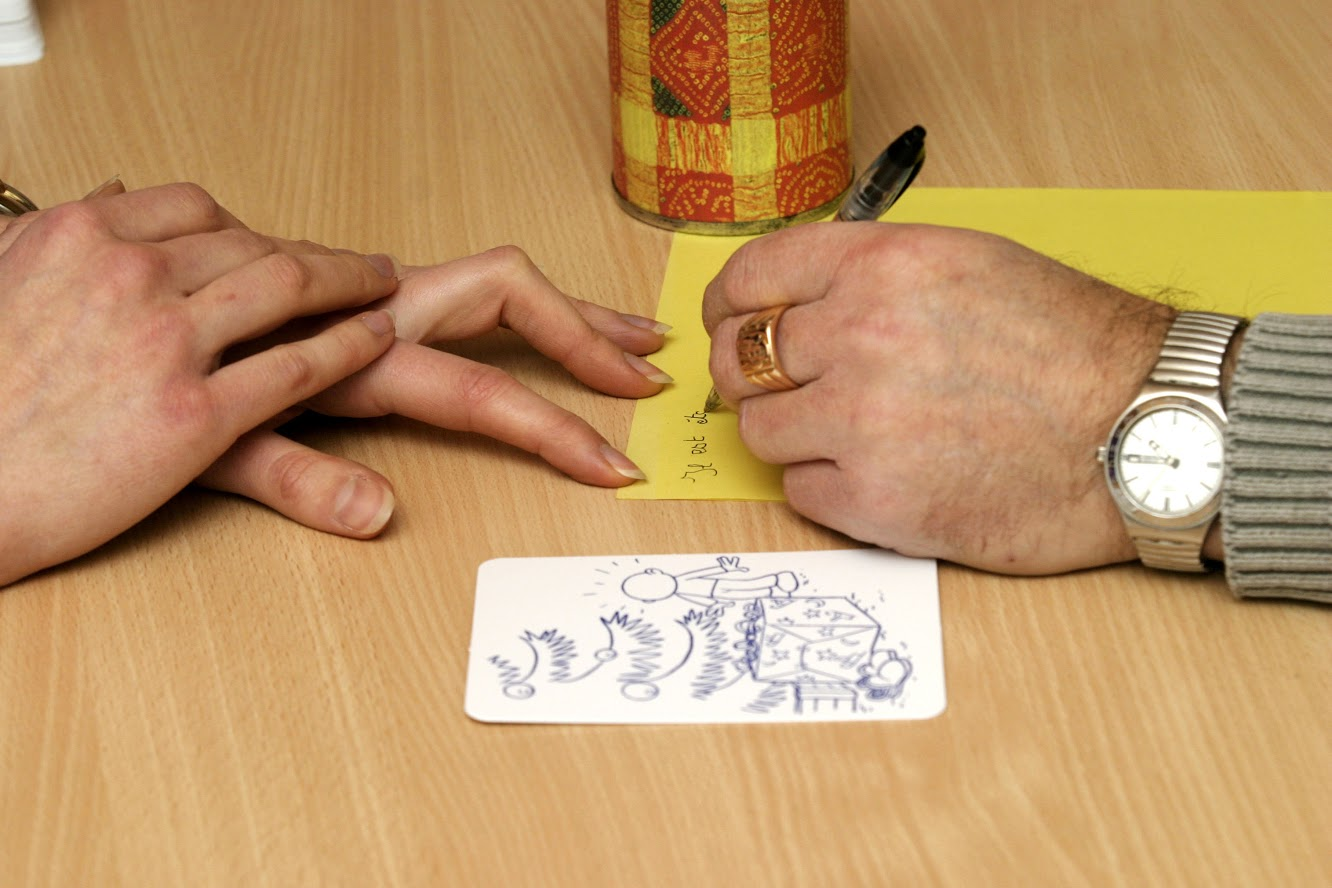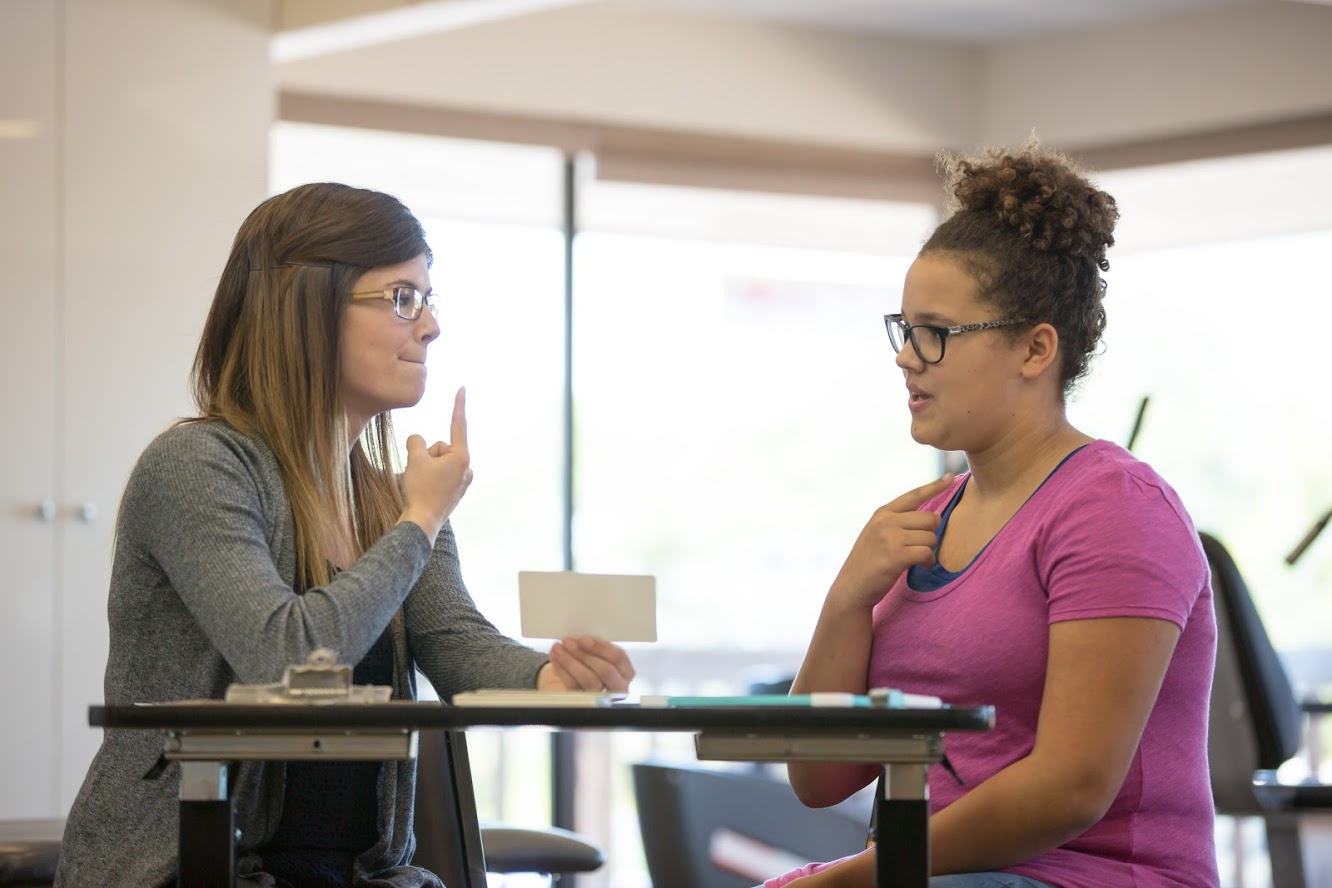Can a Picture Produce 1000 Words?
1.1 WITHIN-GROUPS ANOVA: CAN A PICTURE PRODUCE 1000 WORDS?1 of 9
Welcome
Can a Picture Produce 1000 Words?
Authors:
Kelly M. Goedert, Seton Hall University
Susan A. Nolan, Seton Hall University
Kaylise D. Algrim, Seton Hall University
Aphasia is a language disorder that frequently occurs after an injury to the left hemisphere of the brain, such as a stroke. Individuals with aphasia have problems with comprehending speech or with producing speech, but are otherwise intellectually normal. Aphasia is a very frustrating disorder for patients. Imagine knowing what you wanted to say, but not being able to say it! To help patients with aphasia communicate, therapists often ask patients to draw what they are trying to say. Researchers Pei-Fang Hung and Jennifer Ostergren (2019) wondered whether drawing might be more than just an alternative means of communication—that is, whether drawing could actually help patients with aphasia verbalize what they are trying to say.

1.2 WITHIN-GROUPS ANOVA: CAN A PICTURE PRODUCE 1000 WORDS?2 of 9
For the experiment, the researchers recruited 15 participants with aphasia from rehabilitation centers in the metropolitan area of Los Angeles, California. The researchers wrote, “[T]he participants were asked to name the same thirty (30) black and white line-drawing pictures under three different conditions on three separate days: i) confrontation naming only (CN), ii) naming with drawing (DN), and iii) naming with writing (WN)” (p. 6). In the confrontation naming condition, participants were shown each drawing one at a time. For each drawing, they were confronted with the question: “What is this?” In the naming with drawing condition, participants were told, “Draw the picture you were just shown,” and then the therapist would prompt, “What are you drawing?” In the naming with writing condition, participants were told, “Write the name of the picture you were just shown,” and then the therapist would ask them to say aloud the name of the picture. With these three conditions, the researchers established two controls for the drawing: the confrontation naming–only condition and the naming with writing condition.
1.3 WITHIN-GROUPS ANOVA: CAN A PICTURE PRODUCE 1000 WORDS?3 of 9
The researchers described how they measured naming accuracy: “Participants’ naming responses were scored via a 3-point scoring system, including two (2), one (1), and zero (0) points. A correct and well-articulated response was scored as two (2) points. An incorrect response or no response was scored as zero (0) points. . . . One point (1) was given to a correct response but with a delay that lasted less than 20 seconds. One point was also assigned to responses when only one phoneme was produced inaccurately and the target word was still comprehensible and recognizable. . . . The maximum points of each naming condition were sixty (60) points respectively when a participant accurately named all thirty items” (p. 8).
1.4 WITHIN-GROUPS ANOVA: CAN A PICTURE PRODUCE 1000 WORDS?4 of 9
In describing how they analyzed the data, the researchers wrote, “A one-way, repeated measures analysis of variance (ANOVA) was computed to analyze the impact of naming conditions on the participants’ naming accuracy. The significance level was set at p < .05” (p. 12).
1.5 WITHIN-GROUPS ANOVA: CAN A PICTURE PRODUCE 1000 WORDS?5 of 9
When describing their results, the researchers provided the means and standard deviations of each naming condition, as well as the results of the ANOVA, in tables in their paper. On average, naming accuracy was M = 30.47 (SD = 15.4) in the naming-only condition, M = 32.07 (SD = 15.4) in the naming with drawing condition, and M = 28.40 (SD = 15.6) in the naming with writing condition. The results of the ANOVA were F(2, 28) = 5.87, p = .007, η2 = .295. [Note: We have altered the df reported for the F test to reflect the correct df for the repeated-measures (within-groups) ANOVA.]
1.6 WITHIN-GROUPS ANOVA: CAN A PICTURE PRODUCE 1000 WORDS?6 of 9
We reproduce the description of the results again here, adding the researchers’ description of the post hoc tests: On average, naming accuracy was M = 30.47 (SD = 15.4) in the naming-only condition, M = 32.07 (SD = 15.4) in the naming with drawing condition, and M = 28.40 (SD = 15.6) in the naming with writing condition. The results of the ANOVA were F(2, 28) = 5.87, p = .007, η2 = .295. Additionally, the researchers wrote, “Post hoc tests using the Bonferroni correction revealed that the participants performed better in the naming with drawing condition (DN) than in the naming with writing condition (WN) (M = 32.07 vs. M = 28.40, respectively), which was statistically significant (p < 0.01). However, no statistically significant difference was found in naming accuracy between CN and DN and between CN and WN” (p. 12). (Recall that CN refers to “confrontational naming,” what the researchers called the naming-only condition.)
1.7 WITHIN-GROUPS ANOVA: CAN A PICTURE PRODUCE 1000 WORDS?7 of 9
Recall that the researchers reported these results for the ANOVA: F(2, 28) = 5.87, p = .007, η2 = .295. The η2 (eta-squared) value is a measure of effect size that can be interpreted in the same way as R2. That is, it tells us the proportion of variance in the dependent variable accounted for by the independent variable.
1.8 WITHIN-GROUPS ANOVA: CAN A PICTURE PRODUCE 1000 WORDS?8 of 9
1.9 WITHIN-GROUPS ANOVA: CAN A PICTURE PRODUCE 1000 WORDS?9 of 9
The bottom line: Although drawing may be an alternative form of communication for patients with aphasia, it may not help them verbalize what they are trying to say; however, we should be careful not to accept the null hypothesis! Perhaps more research with larger samples is needed.

REFERENCES
Hung, P.-F., & Ostergren, J. (2019). A comparison of drawing and writing on facilitating word retrieval in individuals with aphasia. Aphasiology, 1–20. [Epub ahead of print.] https://doi.org/10.1080/02687038.2019.1602861